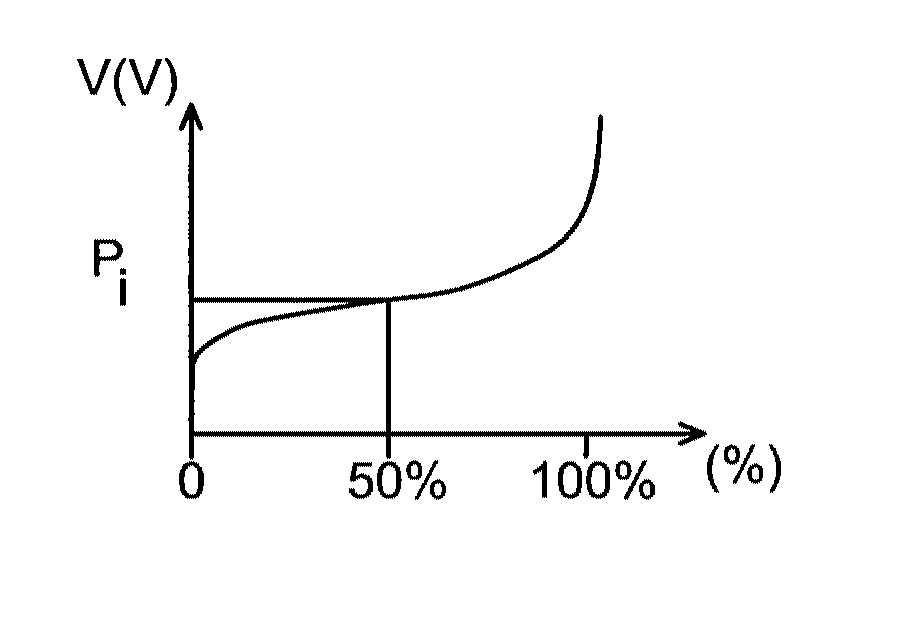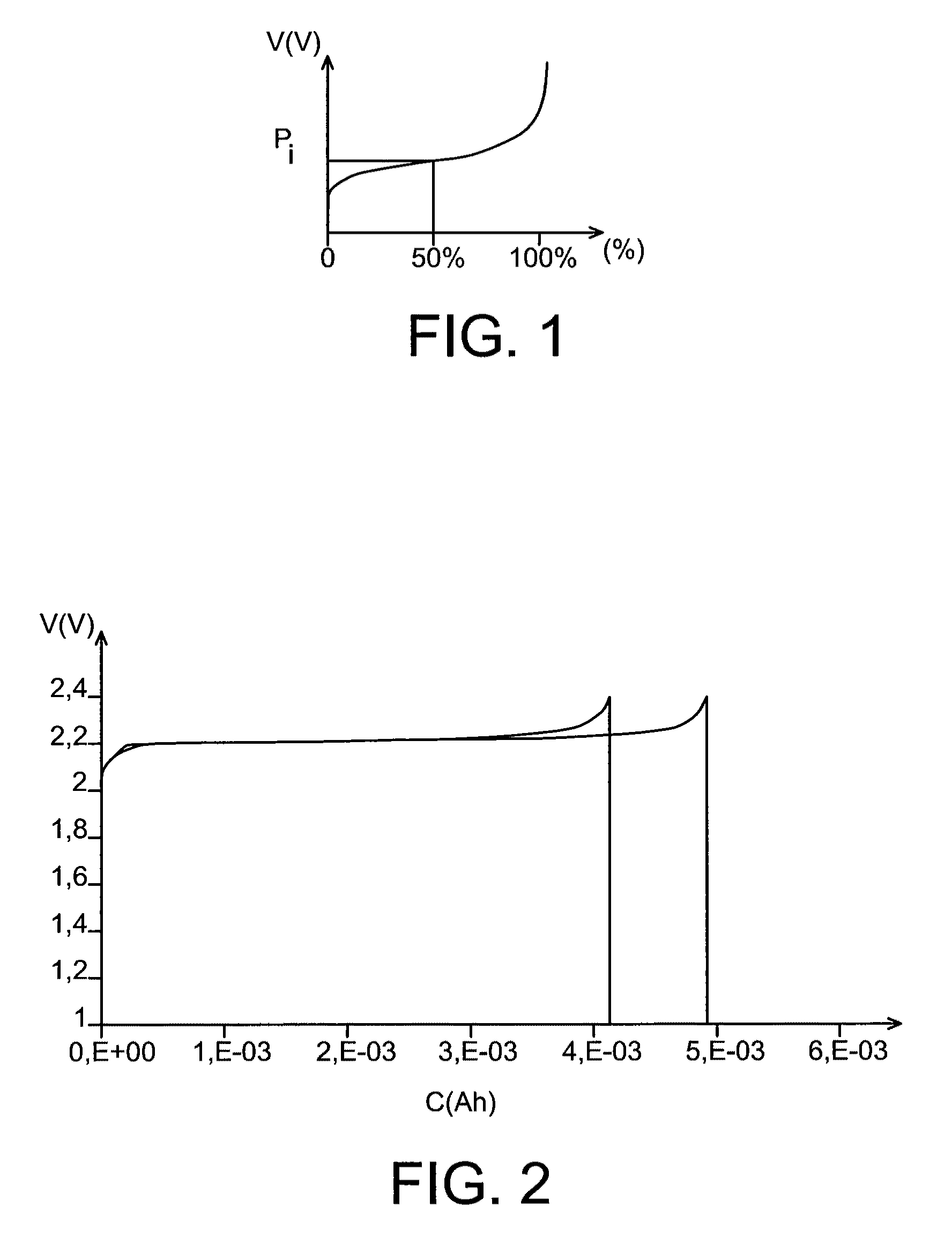Lithium battery using an aqueous electrolyte
a technology of lithium rechargeable batteries and electrolyte, applied in the field of lithium batteries, can solve the problems of relatively limited power performance of lithium rechargeable batteries using an electrolyte based on an organic solven
- Summary
- Abstract
- Description
- Claims
- Application Information
AI Technical Summary
Benefits of technology
Problems solved by technology
Method used
Image
Examples
example
[0051]This example illustrates the preparation of a lithium battery comprising:[0052]a positive electrode comprising LiFePO4,[0053]a negative electrode comprising Li4Ti5O12,[0054]a liquid electrolyte consisting of a 4M aqueous solution of LiOH.
[0055]The preparation referred to above comprises:
[0056]a) preparing the electrodes,
[0057]b) preparing the liquid electrolyte,
[0058]c) producing the stack to generate a positive electrode / electrolyte / negative electrode stack.
a) Preparing the Electrodes
[0059]The reagents for preparing the electrodes are:[0060]LiFePO4 powder for the positive electrode and Li4Ti5O12 powder for the negative electrode,[0061]Super P carbon black powder (from Timcal),[0062]fibres (from Toho Tenax GmbH),[0063]a 2% solution of CMC (carboxymethyl cellulose, from Aldrich),[0064]a 41% solution of NBR (nitrile-butadiene rubber, from PolymerLatex GmbH),
[0065]said reagents being present in the respective proportions by mass as follows: 92%, 2%, 2%, 2% and 2%.
[0066]The protoc...
PUM
| Property | Measurement | Unit |
|---|---|---|
| thickness | aaaaa | aaaaa |
| conductivity | aaaaa | aaaaa |
| oxidation-reduction potential | aaaaa | aaaaa |
Abstract
Description
Claims
Application Information
 Login to View More
Login to View More - R&D
- Intellectual Property
- Life Sciences
- Materials
- Tech Scout
- Unparalleled Data Quality
- Higher Quality Content
- 60% Fewer Hallucinations
Browse by: Latest US Patents, China's latest patents, Technical Efficacy Thesaurus, Application Domain, Technology Topic, Popular Technical Reports.
© 2025 PatSnap. All rights reserved.Legal|Privacy policy|Modern Slavery Act Transparency Statement|Sitemap|About US| Contact US: help@patsnap.com


